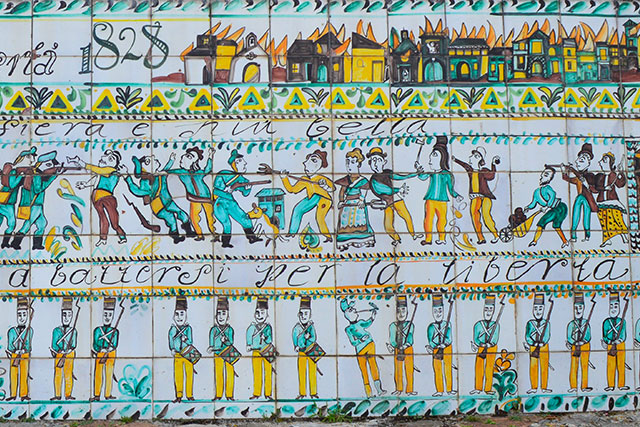Roccagloriosa e Bosco: ad ognuno i suoi gioielli Le Guide di Paestum e Velia en

Morning dedicated to the visit of Roccagloriosa
Lunch break in typical restaurant or packed lunch
Visit to the Ortega House and Museum in Bosco
Pianoro di Ciolandrea ( panoramic view of four regions )
Return
Located in the National Park of Cilento and Vallo di Diano, Roccagloriosa has been a UNESCO site since 1988, because it preserves an important historical, archaeological and landscape heritage.
The oldest evidence ever found dates back to the Neolithic period but there are references to the Bronze and Iron Ages. It was in the Lucanian era, V -III century B.C, that the residential nucleus of Roccagloriosa reached its maximum splendor, also assuming a function of outpost on the Tyrrhenian coast and becoming a centre to control a geographically well-defined territory.
Its pyramidal development made it possible to establish that the high citadel was occupied by noble families and the lowt part by common people. This was common also to ancient greek cities.
The discovery of splendid chamber tombs, gold artefacts and wonderful ceramic vases, now preserved in two small museums, is evidence to this theory.
Four kilometres walking distance there is an ancient cemetery with lucanian tombs.
The second place to visit is Bosco, not far from Roccagloriosa. This small village links its name to José Ortega, Spanish realist painter, student and friend of Picasso, anti-fascist, in favour of freedom. Here he was exiled.
His paintings are often portrait of peasants, because they remind him of his native country and they also represent the desire of freedom. In the centre of the town there is a significant mural consisting of 196 painted majolicas, depicting Bourbon marching soldiers.
Several other works are displayed in the museum dedicated to him and inaugurated in 2011 on the occasion of the 150th anniversary of the Unification of Italy. Not far from the Museum is his home, a living expression of his thought.
Certainly the natural terrace Ciolandrea deserves a stop.
It’s a breathtaking landscape overlooking the sea, called precisely Belvedere of the “four regions", because from there you can see the surrounding mountains, seaside resorts and even other three regions as Calabria, Basilicata and Sicily.